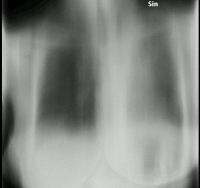
Photo from wikipedia
Objectives This study aimed to investigate the influencing factors of delayed clearance of Talaromyces marneffei (T. marneffei) in blood culture of patients with acquired immune deficiency syndrome (AIDS) complicated with… Click to show full abstract
Objectives This study aimed to investigate the influencing factors of delayed clearance of Talaromyces marneffei (T. marneffei) in blood culture of patients with acquired immune deficiency syndrome (AIDS) complicated with talaromycosis after antifungal therapy. Methods The patients with AIDS complicated with talaromycosis were retrospectively enrolled, and divided into two groups according to the blood T. marneffei culture results in two weeks after antifungal therapy. The baseline clinical data were collected and the antifungal susceptibility of T. marneffei was tested. Results A total of 190 patients with AIDS and talaromycosis were enrolled, of whom 101 cases remained positive for T. marneffei (Pos-group) while the other 89 cases were negative in blood culture (Neg-group) after two weeks’ antifungal treatment. The Pos-group had a higher baseline Aspartate aminotransferase (AST, 78.5 vs. 105 U/L; P = 0.073) and lower CD4+ T cells level (11 vs. 7 cells/μl; P = 0.061). The percentage of isolates with higher MICs of voriconazole (VOR) and fluconazole (FLU) in the Pos-group were significantly higher than those in the Neg-group (χ2 = 12.623, P < 0.001 and χ2 = 9.356, P = 0.002, respectively). By multivariate logistic regression, the MIC value for VOR was identified as the prognostic variable that may influence the clearance of T. marneffei in blood culture after antifungal therapy among AIDS patients with talaromycosis. Conclusions The delayed negative conversion of blood T. marneffei-culture may be associated with some factors especially higher MIC of VOR, indicating the possibility of drug resistance of T. marneffei.
Journal Title: PLOS Neglected Tropical Diseases
Year Published: 2023
Link to full text (if available)
Share on Social Media: Sign Up to like & get
recommendations!